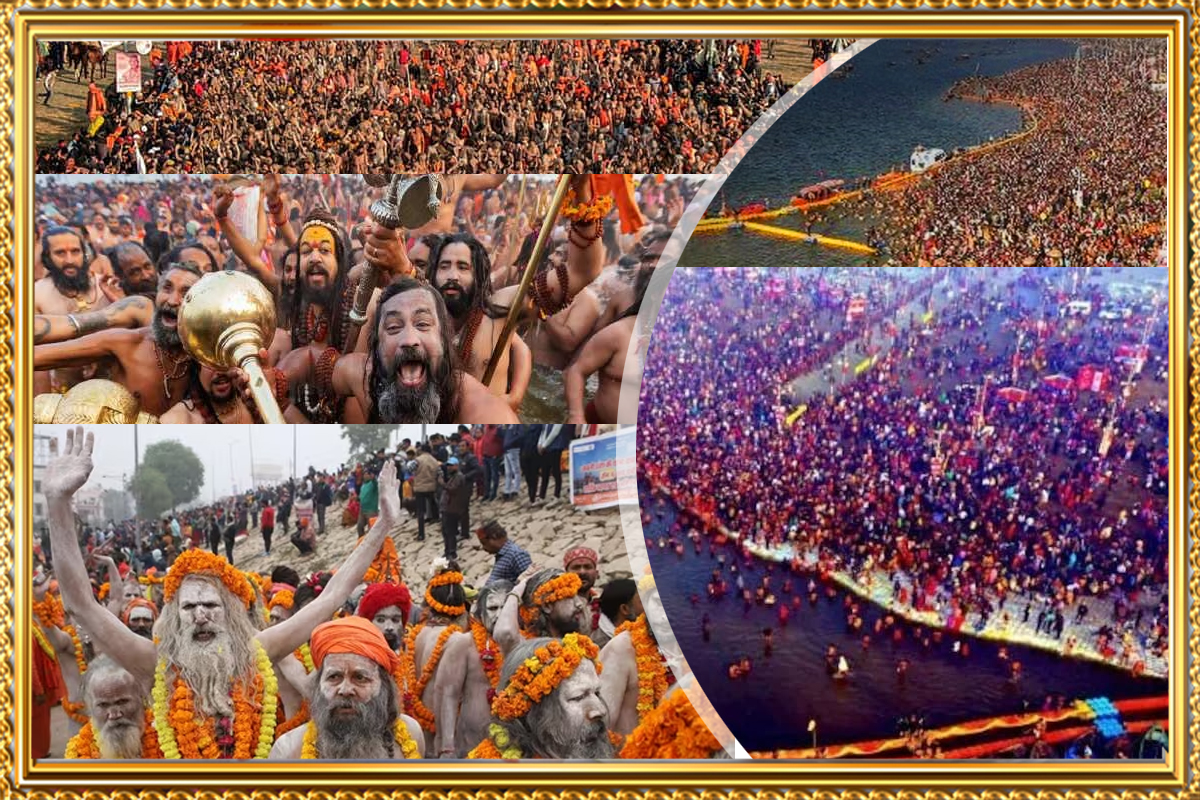- Home
- Mahakumbh Mela Hosting Made Easy: Challenges & Opportunities
Mahakumbh Mela Hosting Made Easy: Challenges & Opportunities

Discover the monumental challenges and innovative solutions behind hosting the Mahakumbh Mela, India’s largest spiritual gathering. Learn about its cultural significance, logistical intricacies, and the transformative impact on tourism and community.
The Mahakumbh Mela, held every 12 years, is a spiritual spectacle that draws millions of devotees to the sacred confluence of the Ganges, Yamuna, and the mythical Saraswati rivers. It is not only a celebration of faith but also a monumental logistical event. However, hosting an event of this magnitude comes with its own set of challenges and opportunities.
Historical and Spiritual Significance
Key Challenges in Hosting Mahakumbh
Innovative Solutions
Historical and Spiritual Significance
Key Challenges in Hosting Mahakumbh
Innovative Solutions
Positive Aspects
Negative Aspects
FAQs
CONCLUSION
Historical and Spiritual Significance
The Mahakumbh Mela traces its origins to ancient Hindu mythology, specifically the tale of the Samudra Manthan (churning of the ocean), which signifies the eternal battle between good and evil. The nectar of immortality, or Amrit, spilled at four sacred locations—Prayagraj, Haridwar, Ujjain, and Nashik—making these sites pivotal for the Kumbh gatherings.
- This event is deeply rooted in spiritual beliefs, with devotees believing that bathing in the holy rivers during the Mela purifies the soul and leads to moksha (liberation). The grand festival also serves as a platform for religious discourses, astrological conferences, and cultural exchanges, reinforcing its status as a cornerstone of India’s spiritual and cultural heritage.

Key Challenges in Hosting Mahakumbh
Cultural Sensitivities: Balancing modern amenities while respecting traditional practices can be a delicate endeavor. Ensuring all communities feel represented and included is key.
- Massive Influx of Pilgrims: The Mahakumbh attracts over 100 million visitors, including international tourists, in a span of weeks. Managing such a massive crowd requires meticulous planning to avoid overcrowding, stampedes, and other safety hazards.
- Infrastructure Development: Temporary infrastructure such as tents, sanitation facilities, and bridges must be erected to accommodate the influx. Permanent upgrades to roads, ghats, and transportation systems are also critical.
- Waste Management: Ensuring cleanliness while maintaining ecological balance is a herculean task. Biodegradable waste management systems and eco-friendly initiatives are essential to minimize environmental impact.
- Security Concerns: From terrorist threats to petty crimes, the security challenges are diverse. Deploying AI-enabled cameras, drones, and RFID wristbands for crowd tracking is becoming increasingly important.
- Health and Safety: Preventing the spread of diseases in such dense gatherings is critical. Medical camps, vaccination drives, and multilingual health awareness campaigns are necessary components.
Innovative Solutions
- Digital Initiatives: The introduction of GPS-enabled mobile apps, multilingual AI chatbots, and a digital lost-and-found center can enhance visitor experience.
- Sustainable Practices: Using solar-powered lighting, eco-friendly tents, and advanced sewage treatment plants ensures sustainability.
- Advanced Transportation Systems: Special train and bus services, integrated with real-time tracking apps, can significantly reduce travel stress.
- Community Engagement: Involving local communities in planning and execution fosters ownership and ensures better implementation of plans.
Historical and Spiritual Significance
- UNESCO Recognition: The Kumbh Mela has been recognized by UNESCO as an "Intangible Cultural Heritage of Humanity," underscoring its global importance.
- Role of Akharas: The Akharas, ancient religious orders, play a significant role in the Mela, organizing rituals and philosophical discussions that attract scholars and spiritual seekers.
- Astrological Importance: The timing of the Mahakumbh Mela is determined by specific planetary alignments, such as the position of Jupiter in Aquarius and the Sun in Aries, adding an astrological dimension to its significance.
- Cultural Exchange Hub: The Mela acts as a confluence of ideas, rituals, and practices from various regions of India, fostering cultural unity.
- Living Heritage: It is not just an event but a living tradition that has evolved over centuries, reflecting India’s dynamic spiritual landscape.
Key Challenges in Hosting Mahakumbh
- Technology Gaps: Ensuring reliable internet connectivity and digital literacy among visitors can be challenging. Many pilgrims may not be familiar with digital tools.
- Coordination Between Agencies: Effective collaboration among government bodies, private organizations, and NGOs is critical but often difficult to achieve.
- Resource Allocation: Balancing budget constraints while ensuring the quality of infrastructure and services is a recurring challenge.
- Post-Event Cleanup: The massive cleanup required after the event often faces logistical and budgetary hurdles.
Innovative Solutions
- AI-Powered Analytics: Using AI and big data for predictive crowd management and real-time monitoring of resources.
- Virtual Participation: Live-streaming key events and rituals for those unable to attend in person, ensuring inclusively.
- Waste-to-Energy Initiatives: Converting biodegradable waste into energy can be a step towards sustainability.
- Microgrid Power Systems: Deploying temporary microgrids for electricity can ensure uninterrupted power supply without overburdening local grids.
Positive Aspects
- Boost to Tourism: Mahakumbh serves as a magnet for international and domestic tourists, significantly boosting local economies.
- Cultural Revival: The event revitalizes ancient practices and provides a platform for showcasing India’s rich cultural diversity.
- Technological Advancements: Hosting the Mela has often driven the adoption of advanced technologies in public infrastructure and crowd management.
Negative Aspects
- Environmental Impact: Despite efforts, large gatherings often lead to pollution of rivers and surrounding areas.
- Displacement Issues: Temporary infrastructure and large-scale planning can disrupt the lives of local residents.
- Security Risks: Managing millions of people increases the risk of accidents, crimes, and health crises.
FAQs
- What is Saahi Snan in Mahakumbh? Saahi Snan, or royal bath, is a ceremonial dip taken by saints and sadhus, particularly those from Akharas (religious orders), symbolizing spiritual cleansing.
- How often is Mahakumbh Mela held? The Mahakumbh Mela is celebrated in Prayagraj once every 12 years.
- What measures are being taken to ensure cleanliness? The authorities have introduced biodegradable waste systems, eco-friendly materials, and increased awareness campaigns.
- Can I drive to Mahakumbh? Yes, but it is advisable to use public transport due to heavy traffic and limited parking facilities.
- Where can I stay during Mahakumbh? Accommodation options range from luxury tents and hotels to basic dormitories near Akharas and ghats.
Conclusion

While challenges abound, they also present opportunities for innovation and growth. As the world’s largest gathering of faith, the Mahakumbh is not merely an event; it is a celebration of humanity, spirituality, and collective endeavor. With sustainable practices, technological advancements, and community participation, the Mahakumbh 2025 is poised to set new benchmarks in event management and cultural diplomacy.
0 Comments
Top Rated Adventure
Where to Find the Best Holiday Decorations and Free Tours in Washington D.C.
- 25 Nov 2024
- 0 0


















Post a comment